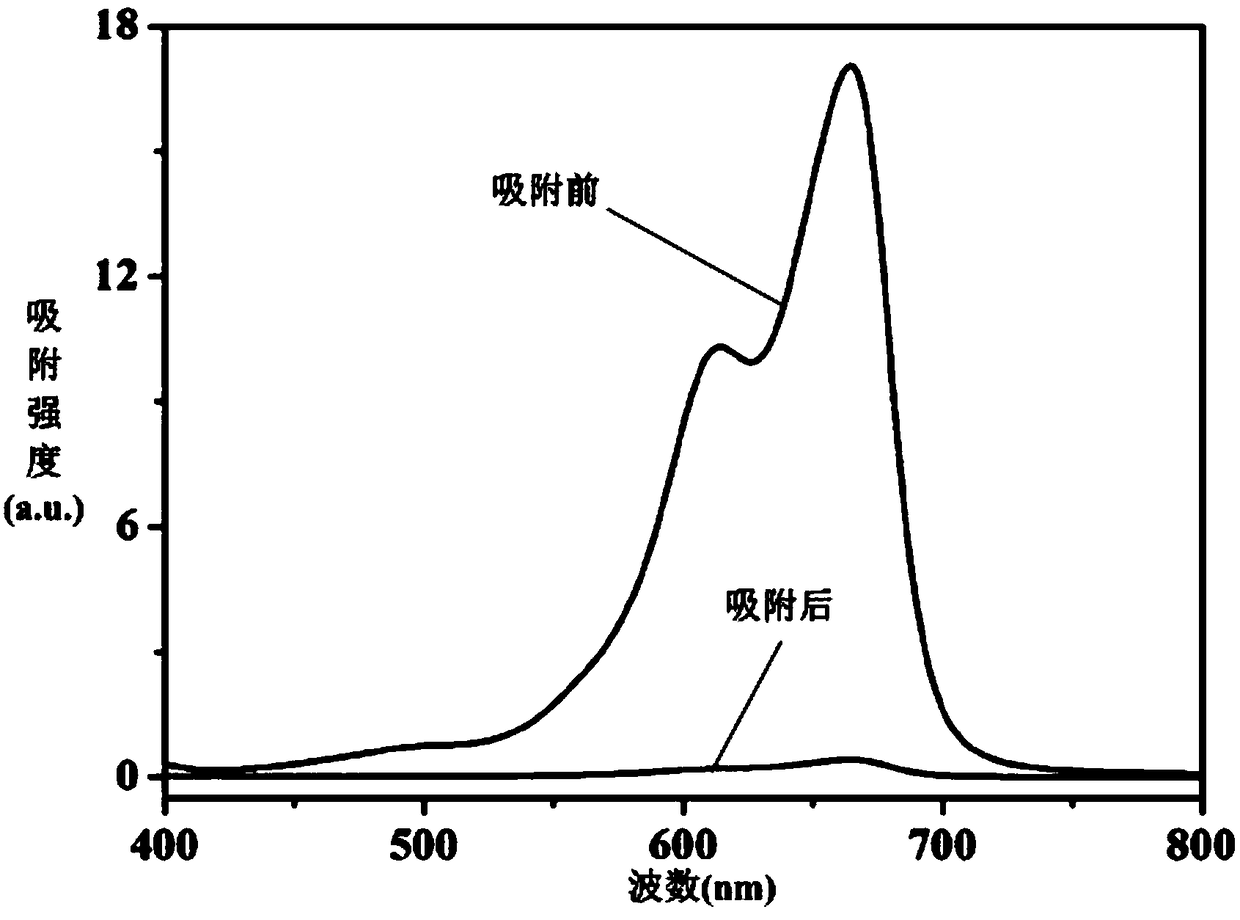Composite photocatalyst and preparation method and application thereof
A technology of catalyst and composite light, which is applied in chemical instruments and methods, physical/chemical process catalysts, separation methods, etc., can solve the problems of complex preparation methods and poor dispersion, and achieve simple preparation methods, high defect density, and large concentration Effect
- Summary
- Abstract
- Description
- Claims
- Application Information
AI Technical Summary
Problems solved by technology
Method used
Image
Examples
Embodiment 1
[0090] A composite photocatalyst comprising:
[0091]
[0092] The preparation method of described composite photocatalyst comprises the steps:
[0093] Add 1.5g of sodium dodecylbenzenesulfonate and 0.25g of sodium hexametaphosphate to the aqueous dispersion of 50g of exfoliated graphene and the aqueous solution of 500g of nano-titanium dioxide, after stirring, ultrasonic and high-pressure homogenizer treatment , to obtain graphene aqueous dispersion A and TiO 2 The pre-dispersion B; then slowly add the dispersion A to the dispersion B, after stirring, ultrasonic and high-pressure homogenizer to obtain the mixed dispersion C; finally add the weighed 250g 2wt% nanofiber Aqueous plain solution, constant volume 1kg, after stirring, ultrasonic and ball milling treatment at room temperature, and finally get off-white homogeneous TiO 2 Aqueous dispersion of graphene / nanocellulose ternary composite catalyst.
Embodiment 2
[0095] A composite photocatalyst comprising:
[0096]
[0097] The preparation method of described composite photocatalyst comprises the steps:
[0098] 0.5g of polyvinylpyrrolidone and 0.25g of sodium hexametaphosphate were added to the aqueous dispersion of 50g of exfoliated graphene and the aqueous solution of 500g of nano-titanium dioxide, and after stirring, ultrasonic and high-pressure homogenizer treatment, graphene was obtained respectively. Aqueous dispersion A and TiO 2 The pre-dispersion B; then slowly add the dispersion A to the dispersion B, after stirring, ultrasonic and high-pressure homogenizer to obtain the mixed dispersion C; finally add the weighed 250g 2wt% nanofiber Aqueous plain solution, constant volume 1kg, after stirring, ultrasonic and ball milling treatment at room temperature, and finally get off-white homogeneous TiO 2 Aqueous dispersion of graphene / nanocellulose ternary composite catalyst.
Embodiment 3
[0100] A composite photocatalyst comprising:
[0101]
[0102] The preparation method of described composite photocatalyst comprises the steps:
[0103] 0.83g of polyvinylpyrrolidone and 0.5g of sodium hexametaphosphate were added to the aqueous dispersion of 83g of exfoliated graphene and the aqueous solution of 334g of nano-titanium dioxide, and after stirring, ultrasonic and high-pressure homogenizer treatment, graphene was obtained respectively. Aqueous dispersion A and TiO 2 The pre-dispersion B; then slowly add the dispersion A to the dispersion B, after stirring, ultrasonic and high-pressure homogenizer to obtain the mixed dispersion C; finally add the weighed 400g 2.5wt% nano Cellulose aqueous solution, constant volume 1kg, after stirring, ultrasonication and ball milling at room temperature, finally get off-white uniform TiO 2 Aqueous dispersion of graphene / nanocellulose ternary composite catalyst.
PUM
| Property | Measurement | Unit |
|---|---|---|
| particle diameter | aaaaa | aaaaa |
| thickness | aaaaa | aaaaa |
| diameter | aaaaa | aaaaa |
Abstract
Description
Claims
Application Information
 Login to View More
Login to View More - R&D
- Intellectual Property
- Life Sciences
- Materials
- Tech Scout
- Unparalleled Data Quality
- Higher Quality Content
- 60% Fewer Hallucinations
Browse by: Latest US Patents, China's latest patents, Technical Efficacy Thesaurus, Application Domain, Technology Topic, Popular Technical Reports.
© 2025 PatSnap. All rights reserved.Legal|Privacy policy|Modern Slavery Act Transparency Statement|Sitemap|About US| Contact US: help@patsnap.com



